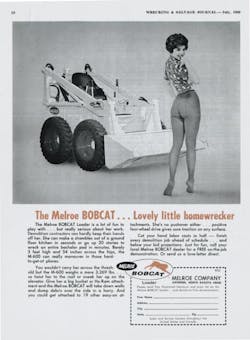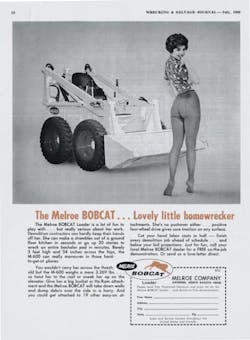Yes, you read that right. Stereotypes are good simply because they remind us how far we’ve come—or how far we’ve yet to go.
What stereotypes are still out there about the construction industry? Could it be the perception that construction is for the uneducated, the grease monkeys and the grunts? That it doesn’t take much gray matter to work on a job site, or operate and maintain equipment?
Back in high school, I remember a guidance counselor trying to scare us into a college education by warning “You don’t want to end up going into the Army, driving a UPS truck, or working construction.”
We’ve always known better (about construction, at least), but thanks in part to organizations like AEMP, companies like John Deere with “You’re On," the near constant visibility of self-appointed blue-collar champion Mike Rowe—and a realization of just how important the industry is to the overall economy—construction has a more intelligent image than it once did.
So let’s declare dead the notion that construction is for dummies.
Perhaps that leaves the classic scene where a group of construction workers ogle a woman walking past the work site, showering her with wolf whistles. This one’s so stale it’s not even used as a crutch in TV ads anymore. And thank God we no longer see magazine ads like this.
Why, even Augusta National Golf Club has admitted women (after grudgingly discovering their existence outside the kitchen).
Our industry left the objectification of women behind long ago. Or did we?
I’ve attended construction trade shows since the late 80s and I contend sexism has not only been coming back, but it’s also been gaining steam in recent years. I’ll overlook the vapid “spokesbunnies” who spout memorized scripts from the steps of wheel loaders. I’m talking about more blatant examples.
At the ConExpo before last, at least two equipment makers made prominent use of provocatively dressed women to boost booth traffic. I’m sorry, but brand theme songs and dangling acrobats merely serve as air fresheners that fail to mask a larger stink.
The regression continued last year, with one of the same manufacturers incorporating more singers in spandex and tight jeans. Then came the pièce de résistance in Paris at Intermat this year—a pole dancer in someone’s booth, gyrating for your pleasure on the half hour.
Europe’s more sexually liberated than the U.S., but come on. Being a former marketer, I’m embarrassed. As a man, I’m saddened.
As David St. Hubbins might say, there’s a fine line between appalling and attracting.
Because I like to serve the public, I’ve attempted to figure out what these companies were thinking. I’ve tried to think like a marketer who’s out of other options to bring a male audience to my booth:
1) Maybe my products can’t stand on their own merits. 2) Perhaps I’m lazy and like cheap thrills. 3) What about my dream of dumping journalism to become the next Paul Verhoeven? Nah, no matter how I approach it, I can’t find justification.
Using women to appeal to a male-dominated audience is doing nothing but seeking the lowest common denominator, and it’s entirely wrong for an industry that should look to erase a long-held stereotype.
If it’s okay at a trade show, what’s to stop the guys from hooting when they’re back on the job site, or worse?
I just finished “Blood, Sweat, and High Heels” (no, it was not a film), a book by Cheryl Waiters, who worked as an electrician on some of Cleveland’s largest construction sites.
Here’s how she described working with men: “When I interacted with the men individually, they were civil to me. When they grouped together and formed ‘herd consciousness,’ they behaved more like cattle (i.e., animals) and it was in this mindset that they treated me like ____. The men…were one notch above cannibals, if that. I had never seen such disdain, disrespect, and absolute disgust of the female gender.”
What did they do to Cheryl? Well, the things I can actually mention here include trying to tip over a porta-potty with her inside, placing a dummy torso of a woman with its head, legs, and arms cut off in a gang box where her tools were stored, and of course, an ADT load of verbal and sexual harassment.
Changing a herd mentality starts with changing individual behavior incrementally; in other words, stop reinforcing sexism and stereotypes.
Whether women are used as a tactic to attract attention due to a company’s laziness and without malice aforethought, or if it’s a case of sheer objectification born of abject piggery, it’s not good.
Yet it does measure the distance we still have to travel.
About the Author
Frank Raczon
Raczon’s writing career spans nearly 25 years, including magazine publishing and public relations work with some of the industry’s major equipment manufacturers. He has won numerous awards in his career, including nods from the Construction Writers Association, the Association of Equipment Manufacturers, and BtoB magazine. He is responsible for the magazine's Buying Files.


